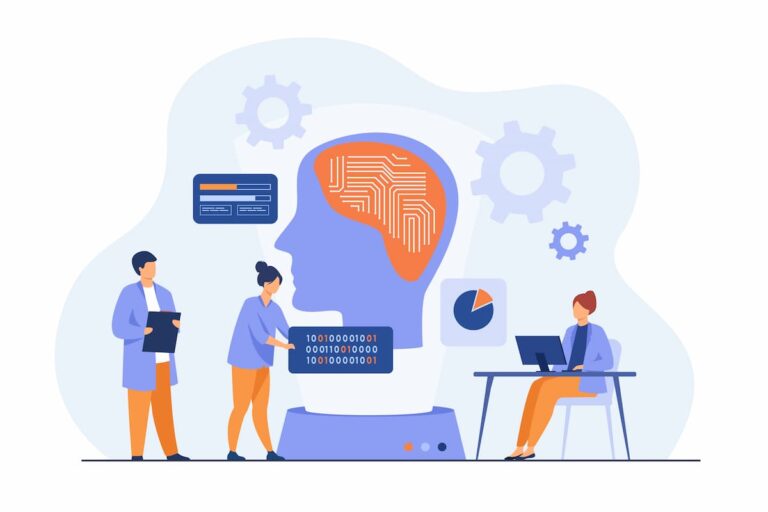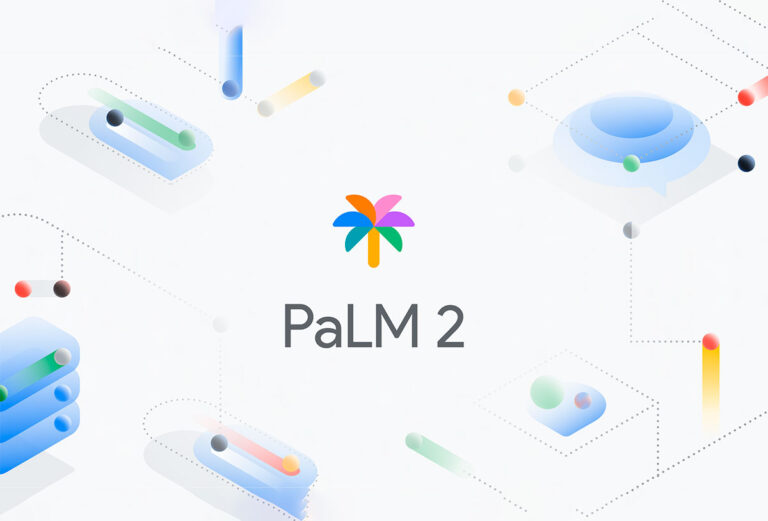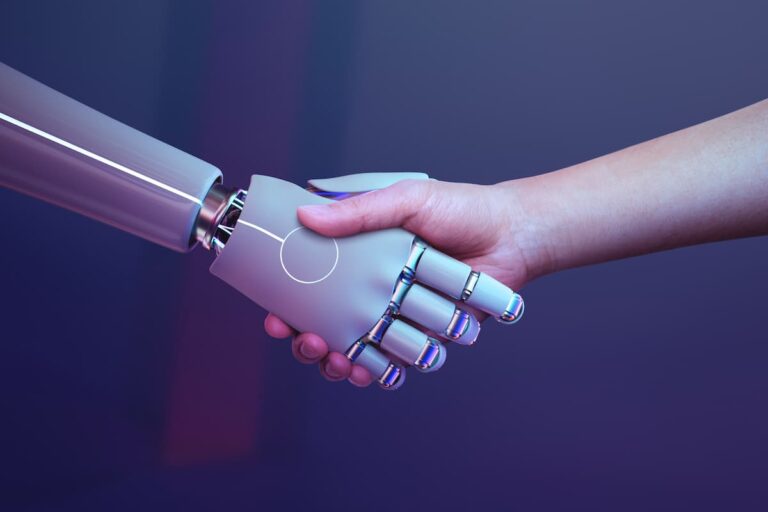At the start of the 21st century, AI was largely seen as a futuristic concept: promising but far from practical. Nowadays, it’s everywhere: powering smart assistants, optimising workflows, and transforming entire industries.
We’re at the turning point for artificial intelligence. It marks a shift from experimentation to execution. Companies are moving past pilots and prototypes, focusing instead on where AI delivers real, measurable value.
Let’s look at the trends defining this new era of AI and what they mean for the future of business.
See also: 5 AI use cases you can start with (even without a Data Science team)
The state of AI tools: a 2025 overview
In 2024, many companies were still experimenting with generative AI, testing general-purpose models, and exploring where they might fit. But in 2025, we’re seeing a clear shift: the focus has moved from experimentation to delivering actual value.
Artificial intelligence has moved out of the lab and into production. Instead of standalone experiments, companies are embedding AI into customer support, operations, compliance, and product features. It’s no longer a side project, but a strategic component of business workflows.
One of the major drivers of this shift is the rise of AI-as-a-Service.
Rather than building models from scratch, companies are integrating powerful APIs from OpenAI, Microsoft, and AWS. This approach has slashed infrastructure costs and removed the need for specialised research teams, making enterprise-grade AI more accessible than ever.
At the same time, we’re seeing a move toward vertical AI: an ecosystem of domain-specific solutions.
Law firms deploy contract intelligence systems trained on legal documents. Healthcare providers embedding radiology-specific diagnostic models. Financial institutions are integrating credit risk models fine-tuned for regulatory alignment. These tools are built for precision, compliance, and performance within tightly regulated domains.
Behind the scenes, a new discipline is quietly taking shape: LLM operations (LLMOps).
This emerging field covers everything from model deployment and lifecycle management to governance, tuning, and prompt security. As a result, roles like LLMOps engineers and prompt security analysts are becoming must-haves in enterprise AI teams.
As OpenAI CEO Sam Altman noted earlier this year, “We believe that, in 2025, we may see the first AI agents ‘join the workforce’ and materially change the output of companies.”
See also: The AI maturity curve: What stage is your company at?
Top AI trends 2025
Since the AI field has expanded over the last decade, it’s hard to track down every innovation, but the most talked about trends are the following.

Beyond machinery: AI-enabled predictive maintenance
When most people think of AI predictions, they imagine product recommendations or personalised ads. But AI’s predictive power has moved well beyond digital marketing, and it’s now embedded in the physical infrastructure of global industries.
Industrial systems, from turbines and wind farms to factory presses, are increasingly monitored by AI models that detect early signs of wear. Predictive maintenance powered by machine learning has become a standard across sectors like energy, manufacturing, and logistics.
Take General Electric, for example. GE uses machine learning to monitor turbine health in real-time, analysing vibration and temperature data to detect anomalies days or even weeks before a failure would occur.
Siemens applies similar techniques to railway systems, predicting track and equipment degradation before it causes service interruptions. These AI systems are already deployed, helping both companies reduce maintenance costs and minimise unplanned downtime.

Both GE and Siemens have reported up to 40% reductions in unplanned outages. For businesses, this means lower costs, fewer surprises, and a move from reactive fixes to proactive, intelligent asset care.
Smarter by design: specialised models
As general-purpose LLMs like GPT-4 face limitations in high-stakes or regulated settings, more businesses are embracing fine-tuned models tailored to their specific domain logic and language.
In legal industry, for example, tools like Harvey AI are trained on legal texts and court decisions. They help firms draft contracts, summarise cases, and navigate jurisdiction-specific language faster and with fewer errors.
In healthcare, Google’s Med-PaLM 2, is being tested for clinical reasoning tasks and has demonstrated diagnostic accuracy comparable to junior doctors in medical exams. These models are trained using domain-specific data, expert oversight, and tightly scoped tasks.

The result: fewer hallucinations, more reliable outputs, and greater trust, especially in sectors where accuracy isn’t optional.
The push for explainable AI
As AI moves from pilots to production, businesses face a new challenge: accountability. It’s not enough for a model to work, leaders must understand how and why it makes decisions. That’s where AI governance comes in.
Forward-looking companies are investing in explainability and traceability to build trust and comply with the regulations. When teams can question an AI system and get clear answers, adoption becomes smoother and the risks easier to manage.
In response, major vendors like IBM and Microsoft have launched enterprise AI governance toolkits focused on risk controls, model transparency, and bias detection.

For businesses, this means lower legal risk and higher confidence in systems that are no longer black boxes, but trusted decision partners.
See also: Demystifying Machine Learning: How algorithms learn (and why it matters)
Final words
With rising regulatory pressure and growing enterprise maturity, 2025 is becoming the year of responsible AI deployment. If your company still treats AI as a side experiment or a flashy tech demo, you’re already falling behind.
Forward-thinking companies aren’t just experimenting with AI; they’re putting it to work where it counts. That means weaving it into core operations, building in oversight, collaborating with domain experts, and even measuring the carbon footprint of their models.
The real lesson of 2025 is that AI only delivers value when it’s anchored to a clear goal and a solid foundation.
However, when paired with clear goals and business context, it becomes a force multiplier, accelerating insights, reducing risks, and helping companies compete at a new level.
How Altamira can help
Working with Altamira means avoiding common pitfalls in AI deployment. We handle the heavy lifting: development, integration, and governance, so your team can focus on outcomes, not infrastructure. We empower businesses with practical AI, combining vertical models, automation, and governance into systems that run smoothly and transparently.
We also boost developer skills, creating in‑house AI expertise through hands‑on training and real projects.
In the end, you get an AI that works for your business and zero headaches.
Get in touch and empower your business with AI today.
FAQ
Smarter, more focused AI is one of the main trends of 2025.
There is a shift toward reasoning and task-specific intelligence. Instead of training larger general-purpose models, companies are investing in AI that can solve narrow problems efficiently.
You’ll also see more attention to AI that can explain its decisions, not just generate results.
AI is increasingly handling repetitive tasks while humans still make critical decisions.
In most industries, AI is becoming a tool that supports employees rather than replaces them. Expect the automation of routine tasks, the integration of more AI copilots into existing tools, and an increased demand for workers who can guide, review, and question AI outputs.
Jobs aren’t disappearing wholesale, but job descriptions are changing.
Integration over experimentation.
2026 will likely be the year businesses stop asking, “Should we use AI?” and start asking “, How do we get it to work properly across teams?” The focus will shift from pilots and prototypes to implementation, governance, and managing AI risks, especially around data quality, compliance, and model reliability.
No, but it’s going to impact how we work.
AI isn’t replacing entire professions anytime soon, but it is reshaping workflows. Content creation, analysis, support, and research are already affected by the changes.
The bigger story is about how organisations adapt: the ones that learn how to work alongside AI will likely move faster and waste less time.






